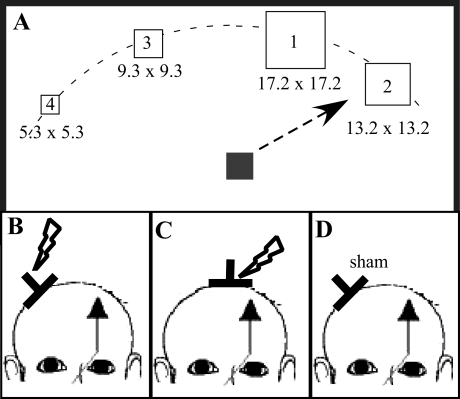Fig. 1.
Experimental setup. A: before and following the stimulation, subjects had to manipulate a joystick in a pointing task with either the left or right hand. Subjects were asked to move a cursor (6.6 × 6.6 mm) as quickly as possible to the center of targets of different sizes on their appearance on the screen. Once located in the center of the target, subjects were asked to push a response button located on the top of the joystick. Targets were presented every 3.5 s at 4 evenly spaced locations on the upper half field of a personal computer (PC) monitor (30, 60, 300, and 330°). Targets were of varying sizes [5.3 × 5.3 mm (target 4), 9.3 × 9.3 mm (target 3), 13.2 × 13.2 mm (target 2), and 17.2 × 17.2 mm (target 1)]. B–D: the effect of 1-Hz repetitive transcranial magnetic stimulation (rTMS) at 90% resting motor threshold (MT) to ipsilateral primary motor cortex (iM1; B) and vertex (C) was tested. In an additional control condition, sham rTMS was applied to iM1 (D).

